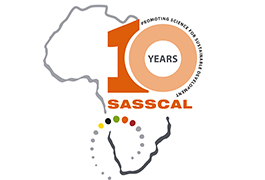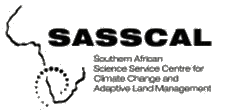From the 26th August to the 29th September 2016 the SE Atlantic, off the Western shores of Africa (from 0-20°S) became the focus area of a large scale airborne laboratory. The field campaign was conducted to carry out the science questions asked by the NASA ORACLES (ObseRvations of Aerosols above CLouds and their intEractionS) project team. The overarching research topic of the ORACLES project is to determine how aerosols, generated by burning biomass (i.e. vegetation fires), that takes place over much of Africa between August – October every year, are interacting and impacting on the permanent stratocumulous (SC) cloud deck situated over the SE Atlantic ocean.

Figure 1: A modelled example of the month of September where the burning biomass aerosols, which form a plume of aerosols, generated over the African continent are moved by upper air currents from the continent over the SE Atlantic. In the SE Atlantic the question to be investigated is how do these aerosols interact, with the variable sized strato-cumulous deck? And what will the result of this interaction be on the cloud properties and thus on the meteorology of the region?
Biomass Burning (BB) Plume and Permanent Strato-cumulous (SC) Interaction
To take a step back and get everyone on the same page, the SC cloud deck referred to above is an extensive low level cloud (generally this type of cloud forms in the lowest 2km of the atmosphere) that is permanently located over the SE Atlantic (the extent of this cloud will vary seasonally). Similar cloud decks are also found off the West coast of both S. America and N. America. This extensive cloud deck plays an important role in the climatology we experience over Africa and the SE Atlantic.
Annually from June to Oct/Nov southern Africa produces approximately 30% of the earth’s biomass burning (BB) particles, the peak of this production is between August and October. The dominant winds during this time of the year are easterly winds which transport these particles as a plume from the continent over into the SE Atlantic ocean (known as the Biomass Burning plume). Currently there is a lack of understanding about how this BB plume interacts with this SC cloud deck. As a feedback from this uncertainty is an uncertainty in how the aerosols impact on the climatology of the region.
Particle interactions with clouds have the ability to result in cooling or heating, depending on resulting radiative forcing that happens when the particles interact (or don’t interact) with clouds. By radiative forcing we refer to the amount of incoming solar energy that is absorbed by the earth vs. reflected back into the atmosphere.
The dominant effect changing these radiative forcing values is the properties of clouds and atmospheric gases. Understanding the changes to the radiative forcing values will therefore play a crucial in not only improving current global and regional climatological models, but will also be important input to fine tune climate change models. There are numerous global and regional climate change models that have been developed.

Figure 2: Different climate models and their predictions for temperature change based on aerosol direct effect from data obtained from Aug-Sept. As can be seen the various model outcomes different substantially.
Figure 2 provides an overview of how a number of different climate models produce different prediction of future temperature changes for the region based on direct effects produced in the August-September climatology. The uncertainty that is displayed in these models is primarily linked to the lack of understanding about the behaviour of the interaction taking place between the BB aerosols and the SC cloud deck.
NASA ORACLES
How then does NASA ORACLES plan to investigate these questions? The ORACLES project is a complex science project that brings together atmospheric scientists, remote sensing scientists and modelers. This team of researchers each has their specific area of interest and questions they wish to investigate, and individual expertise in terms of understanding atmospheric properties. But together when their findings are combined they have the potential to provide the answers sought by the overarching ORACLES objective of understanding the interaction of BB aerosols on the SC cloud deck and how this impacts climatology regionally and globally. The way that ORACLES is approaching this problem is through conducting, over a three year period, three 1 month airborne field campaigns during different months of the annual peak BB seasons (2016-Sept, 2017-Aug, 2018-Oct).
In September 2016, the field campaign involved bringing two instrumented planes to Namibia accompanied by the respective instrument scientists. The incoming team, which included scientists from not only NASA, but also eight other US universities, totalled approximately 100 scientists, pilots and operational staff. The field campaign was broken down into collecting data at 3 different levels: the ground component; the in-cloud, below cloud, above cloud and plume measurements; and high altitude measurements taken from above the cloud and plume deck. The ground component was composed of in-situ measurements, modelling, instrument monitoring and flight planning. Flight planning was based upon information generated through daily weather prediction modelling (twice daily) and science discussions used to help focus the science plans for each flight. The weather briefings looked at the modelled distribution of the SC cloud and the probable location of the BB plume. The afternoon weather briefings were used to design the plan for the following few days of flight plans (e.g. to make routine flights or flights of opportunity) and the morning weather briefing were used to decide if the planned science flight would or wouldn’t go ahead (predicted windspeed and presence of high level cirrus cloud were factors here). The in-situ measurements derived from the regional network of sun photometers, which contribute to the global AERONET network, were used to derive an interpolation of how the aerosol optical depth varied across the region (Figure 3).

Figure 3: AOD interpolation derived from the regional AERONET sun photometer network of instruments. This information in combination with climate information such as wind data could be used to determine where the BB plume might be and the possible aerosol optical densities of the plume
Most of these planning meetings took place in a conference room at the Swakopmund hotel. This room became the ground base for science operations. Scientists that weren’t on the flights of that day would gather in this room and would monitor their instruments (the instruments on the plane were linked to a central wireless and could be monitored from the ground) and start with basic data processing. The progress of the science flights could also be followed and if any information needed to be relayed to the scientists on the plane this could be done through a communal chat. At the end of each day and particularly on the soft down days (the days when there were no flights, but scientists where still working on instruments and data) there would be a science tag up meeting which would give everyone a chance to share either findings or ideas on what had been observed during flights. These science tag up meetings became progressively more in-depth as the campaign progressed because the instrument scientists had had a chance to start analyzing their data and could present their preliminary findings.

Figure 4: (a) The P3 plane at the Walvis Bay Airport, (b) and one of the instruments on the plane. Note that most instruments included a console which enable immediate review of the acquired data as it was measured and it enables check-ups on the health of the instruments.
The in-cloud, below cloud and in BB plume measurements were made using an instrumented P3 Orion plane (Figure 4a). The P3 was really the workhorse plane that carried the bulk of the science instrumentation. The plane can take a total of 23 passengers including the 1 pilot. This is no commercial comfort plane, it is a plane designed to carry out science. This year the plane was kitted out with 10 different measurement instruments, next year this will increase to include 15 different instruments (Figure 4b). During each flight, each instrument may have one or two operators that operate it during the flight. They are able to see data directly as it acquired and link this directly to what is being observed outside. The particular instruments on board measure different aerosol properties, e.g. solar spectral irradiance or AOD (SSFR or 4STAR instrument), condensation nuclei or particle sizer (HIGEAR). During the campaign 15 science flights were made with this plane and a total of 115 hours of measurement were taken. Different flight plans involved the plane flying at different altitudes either above, below, or in the clouds or BB plume. It is planned that this plane will be used in Namibia for all three of the flight campaigns.

Figure 5: The ER2 plane together with the ground crew that are preparing the plane for a science flight.
The second plane that joined for this campaign was the ER2 (Figure 5). This is a high altitude plane which flies at approximately 20km altitude (this puts 95% of the earths atmosphere below the plane). It is operated by a single pilot whom has to don a space suite and breathes pure oxygen for the duration of the flight. On board this plane were 5 instruments (Figure 6), the pilot during the flights receives instructions as to when and where these instruments should be turned on and off.

Figure 6: One of the 5 instruments on board the ER2 is located within the nose of the plane. The AirMISPI instrument simulates the MISR satellite instrument
These instruments are either simulators of satellite instruments, or instruments being developed for future satellite missions. The measurements taken on the P3 provide the scientists with physical measurements of the cloud properties, the ER2 instruments collect remote sensing data at high resolution which can be used to develop models over larger areas (compared to the in-situ measurements being taken on the P3). Data acquired on the P3 can be used to calibrate and validate these upscaled models. These models can then be used to validate satellite measurements. In particular the measurements made by the ER2 could be used for calibration of measurements taken on the CALIPSO satellite. In order to facilitate this validation some of the flights of the ER2 were synchronized with the CALIPSO satellite overpasses. In total the ER2 had 12 flights and flew for a total of 97.3 hours. Of these 12 flights, 7 were coordinated flights between the ER2 and P3 aircrafts, because the planes fly at different speeds, they are unable to coordinate during the entire flight. They therefore coordinate where the two planes should meet and perform joint measurements.

Figure 7: The different science flight paths taken by the ER2 and P3 planes during the 2016 ORACLES field campaign
In Figure 7 the flight paths of the two planes are shown. At this stage no results have yet been produced from the campaign. The scientists are however delighted with the data they have obtained, and I’m certain we can expect some very exciting scientific findings coming from this and the future campaigns. To keep abreast with the output it is worth keeping an eye on the ORACLES website
(espo.nasa.gov/home/oracles).
Capacity Development Component
While the focus of the campaign was on conducting the science and collecting data, the scientists also took a lot of time to assist in the development of local and regional science in a multi-faceted capacity development program. Through a jointly funded project of the US Embassy and NUST, 7 students (Masters and PhD level) from the region (5 students from the two Namibian Universities and 2 from South African universities) joined on a 3 week shadowing program

One of the ER2 pilots kitted out in his flight suit, together with the 7 NASA ORACLES Shadowers from Namibian and SA universities whom joined the field campaign and “shadowed” the different scientists for 3 weeks.
These students had the opportunity to work together with the scientists and find out more about the campaign, different instruments and further develop their skills in atmospheric sciences. A couple of scientists also joined a local team from Namibia University of Science and Technology and the Gobabeb Research and Training Centre to the Science Fair in Ongwediva to help stimulate science in school learners. Some of the scientists delivered talks at the Scientific Society in Swakopmund and in Windhoek at that Windhoek Show and an Open Day was held at the Walvis Bay airport to introduce both government and some of the local schools in the area to the project. It is planned that in the future field campaigns these different capacity building initiatives will be expanded to maximize exposure to both scholars, students and researchers.
by Dr. Nicky Knox Namibia University of Science and Technology (NUST)




